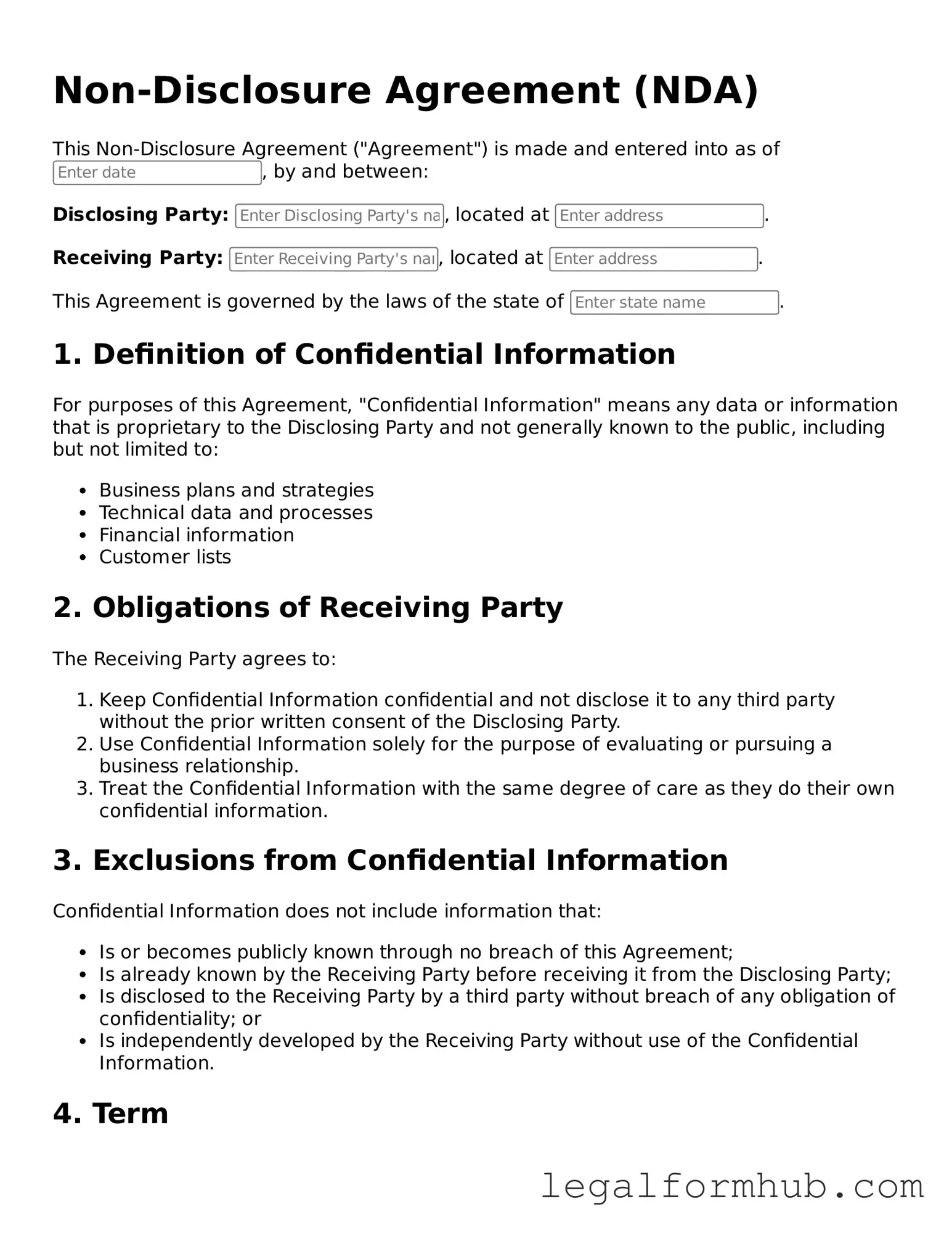A Confidentiality Agreement serves a similar purpose to a Non-disclosure Agreement (NDA). Both documents aim to protect sensitive information shared between parties. In a Confidentiality Agreement, the parties agree not to disclose certain information to outsiders. This can include trade secrets, proprietary information, or any other confidential data. The main difference lies in the terminology; however, the core intent remains the same: to safeguard valuable information from being leaked or misused.
A Non-compete Agreement is another document that shares similarities with an NDA. While an NDA focuses on confidentiality, a Non-compete Agreement restricts one party from engaging in business activities that compete with another party for a specified period and within a specific area. Both documents are often used in business relationships to protect interests, but they address different aspects of that protection—one emphasizes information sharing while the other focuses on market competition.
A Non-solicitation Agreement also bears resemblance to an NDA. This type of agreement prevents one party from soliciting clients or employees from another party. Like an NDA, it seeks to protect business interests and relationships. Both documents can be essential in maintaining the integrity of a business and ensuring that sensitive information and relationships are not exploited by former partners or employees.
The Employment Verification form is a document used by employers to confirm an employee's work history and eligibility for employment. This form plays a critical role in safeguarding both the interests of employers and the rights of employees. Understanding its importance can ensure compliance and smooth operational processes; to get started, you can Fill PDF Forms to access the necessary resources.
Another document that is similar to an NDA is a Licensing Agreement. While a Licensing Agreement typically involves the permission to use intellectual property, it often includes clauses that address confidentiality. In such cases, the parties agree to keep certain aspects of the agreement private. Both documents share the goal of protecting sensitive information, but a Licensing Agreement usually involves the exchange of rights to use specific intellectual property in addition to confidentiality provisions.
Lastly, a Partnership Agreement can also be compared to an NDA in certain contexts. When two or more parties enter into a partnership, they may share sensitive information that needs protection. A Partnership Agreement outlines the terms of the partnership and may include confidentiality clauses similar to those found in NDAs. The primary focus of a Partnership Agreement is on the relationship and responsibilities of the partners, but it can also address the need to keep certain information confidential to protect the interests of all parties involved.
